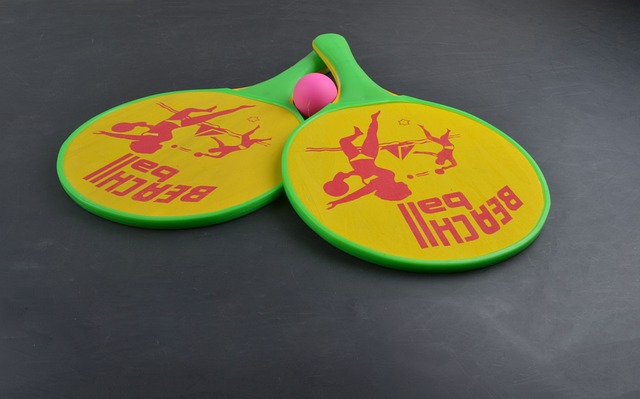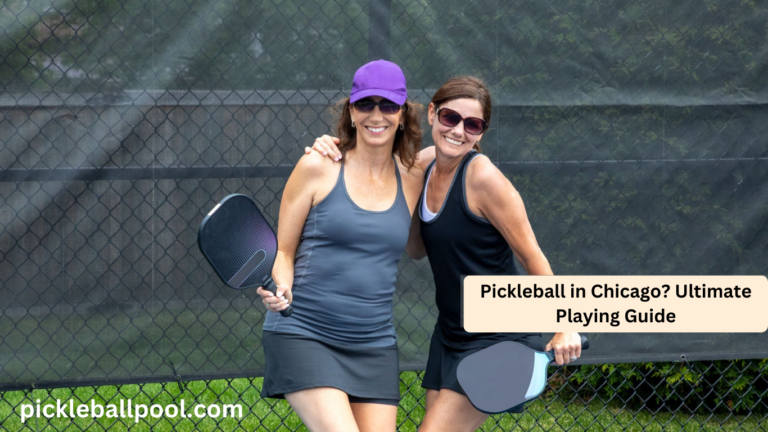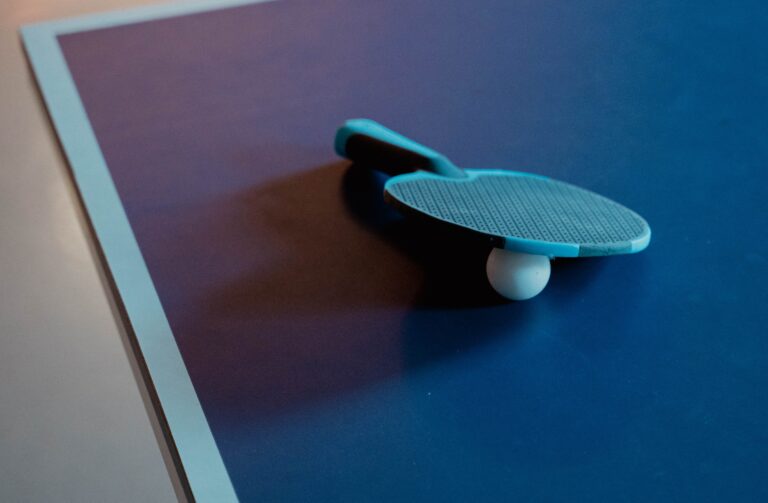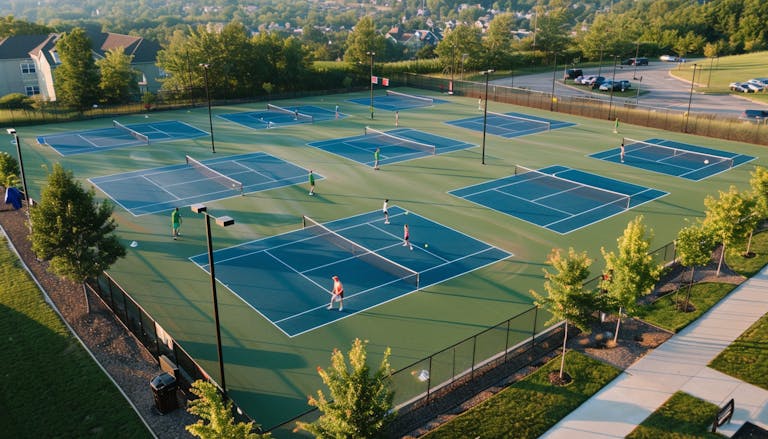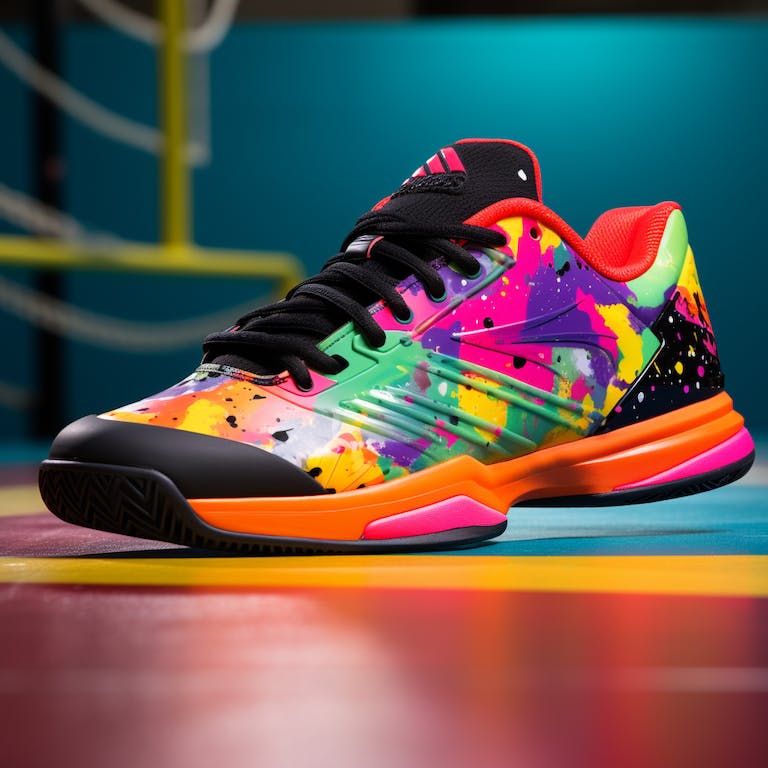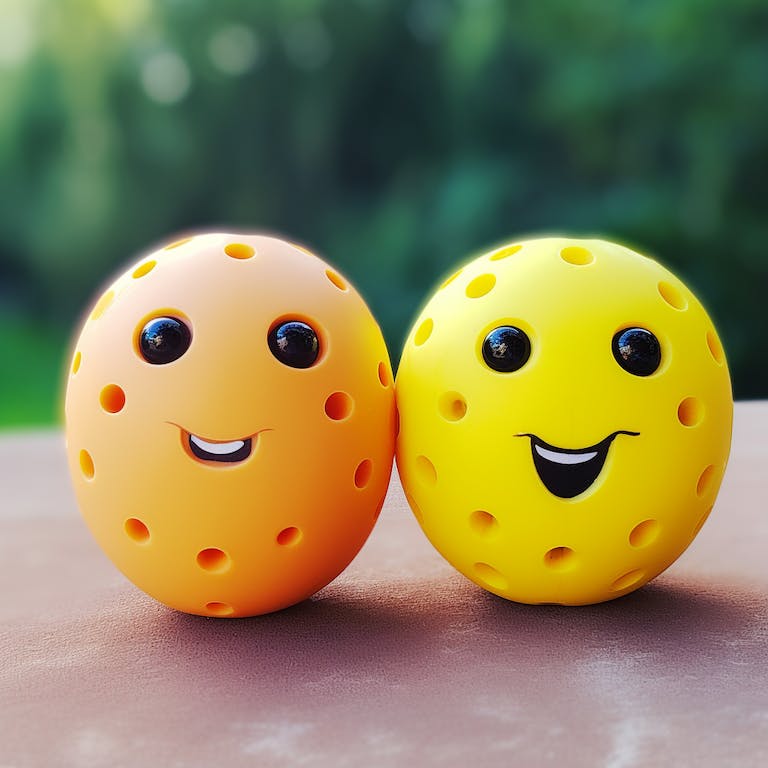Is Pickleball Popular in Europe? Europe Falls for Pickleball
Is Pickleball popular in Europe? Let’s find out. Pickleball is a fast-growing sport that has become very popular in Europe in recent years. It was created in the U.S. over 50 years ago and has gained popularity in countries like Spain, France, and England because new players find it fun and easy to play.
This article looks at the rising popularity of pickleball in Europe. We will discuss the increase in courts and tournaments, how it is similar to Padel, and why more people in Europe are likely to start playing pickleball. Keep reading to learn why they play pickleball in Europe.
What is Pickleball, and How Did It Originate?
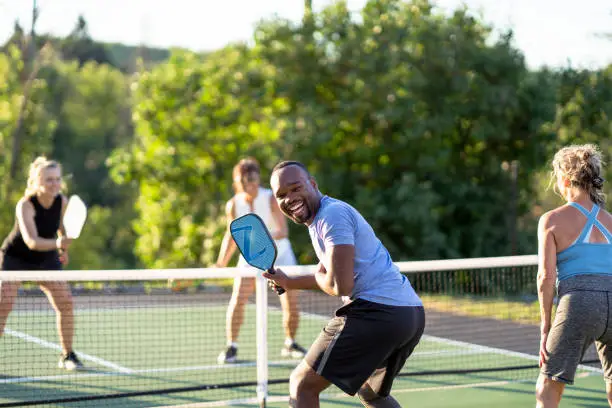
For those unfamiliar, pickleball is a racquet sport played on a small court with a modified tennis net. Players use paddles to volley a perforated plastic ball over the net in singles or doubles matches. Here are some key pickleball facts:
- Invented in 1965 on Bainbridge Island near Seattle by three dads looking for a family activity
- Combines elements of tennis, badminton and table tennis
- Played with solid paddles and a waffle-style plastic ball
- Smaller court size and lower net compared to tennis
- Underhand serve and unique 2-bounce rule before volleys
- Scoring goes up to 11 points instead of tennis’ advantage scoring
After its invention, pickleball slowly spread across the U.S. and Canada, especially as a sport for seniors. But how did this niche American pastime leap the Atlantic?
Is Pickleball popular outside the US?
Pickleball is becoming popular in many countries, not just the United States. In Canada, the sport has grown recently, with clubs and tournaments attracting players of all ages. Spain, Australia, and the United Kingdom are also showing more interest in Pickleball, making it popular worldwide.
Pickleball is popular worldwide because it’s easy to play and suitable for all skill levels. The simple rules and quick learning curve make it perfect for beginners who want to have fun and be social. The Pickleball community is friendly and welcoming to players from different cultures, creating a supportive environment for everyone to enjoy the game together.
When and How Did Pickleball Arrive in Europe?
Pickleball first gained a foothold in Europe around 2010. English players who discovered the sport while travelling in the U.S. brought it back and began spreading it in the U.K. Groups of enthusiasts started setting up temporary nets on tennis courts and other spaces to play.
The U.K. Pickleball Association was formed in 2015 to promote and govern the amateur sport’s development. Other European nations soon followed, establishing national associations in France, Germany, Spain, and beyond.
Spain now has over 70 dedicated pickleball facilities and clubs. Court builders are catering to the new European demand with permanent pickleball lines on courts.
You May Also Like: 9 Best Pickleball Paddles Under $100 for Beginners to Pros
Why Has Pickleball Caught On So Quickly Across Europe?
Several key factors have fueled pickleball’s lightning-fast growth across Europe over the past decade:
Accessible Learning Curve: Pickleball is easier to pick up than tennis or badminton, thanks to the smaller court size, lower net, and simple rules. This makes it ideal for seniors, families, and new players.
Adaptable Courts: Many tennis clubs and public courts are adding pickleball lines to meet demand. Special facilities do not require pickleball.
Affordability: Basic pickleball gear like paddles and balls costs relatively little compared to other racket sports equipment.
Social Experience: The game facilitates lighthearted conversation and connection between players of all ages and abilities.
Full-Body Exercise: Frequent bursts of movement and rallies get the heart pumping for an excellent cardio workout.
With these attributes, it’s easy to understand pickleball’s viral spread among recreational players in Europe. The COVID-19 pandemic gave it a further boost.
you May Like: Top 7 best Portable Pickleball Net for all Weathers
How Does Pickleball Compare to Padel in Europe?
Padel, a sport from Mexico in the 1960s, has become very popular in Europe in the last 10-15 years, like pickleball. They play both as small-court net sports with paddles, but the sports have some differences.
- Padel is played in doubles only, while pickleball has both singles and doubles.
- The padel court is enclosed with walls like squash. The pickleball court is open.
- Padel uses a perforated plastic ball and a wooden paddle. Pickleball uses a similar ball but a larger composite paddle.
- Padel scoring is like tennis. Pickleball has an underhand serve and goes to 11 points.
Sports like paddle sports have become more popular, with paddle sports like Padel being very popular in Spain with over 5 million players. Pickleball is also becoming more popular, especially in Europe where more people are starting to play it.
Pickleball Tournaments and Competitions Proliferate
As pickleball won devotees across world, competitive tournaments started emerging across the continent.
Spain: Hosted the first European Pickleball Championships in 2018 near Barcelona.
U.K.: The English Open Pickleball Tournament launched in 2016 in London.
France: Organizers have held the French Open Pickleball Championships annually near Paris since 2017.
Germany: The German Open Pickleball now takes place in Berlin each year.
Euro Cup Pickleball Championship: Debuted in 2019 for top players across Europe.
Italy, Switzerland, and Ireland hold national championships. This helps European players get better at the game.
Which Countries Play Pickleball in Europe?
Here are some of the leading European countries where pickleball is played:
Spain: Has over 70 dedicated pickleball courts and clubs. Hosts major competitions.
France: The French Pickleball Federation was formed in 2016. Many tennis clubs add pickleball.
U.K.: The U.K. Pickleball Association reports clubs quadrupled from 2017–2021. Pickleball is popular with seniors in England.
Top 6 Countries Where Pickleball Is Played (and Popular)
Germany: We Saw a 114% increase in registered players from 2019 to 2021.
Italy: The Italian Pickleball Association was founded in 2018. Rome hosted the Euro Cup in 2021.
Switzerland: The Swiss Pickleball Association promotes growth. Geneva and Zurich have many players.
Beyond these pickleball hotspots, growth is accelerating across Scandinavia, the Baltics, Russia, and Eastern Europe.
Where Does Pickleball Have the Most Global Popularity?
While pickleball originated in America, it has spread far beyond the country. Here are the top 5 countries with the most pickleball participation globally as of 2022:
1. USA: About 4.8 million players. Pickleball’s birthplace is still its most popular. Best pickleball players like Ben John No one rank player from USA love this sport.
2. Canada: Around 300,000 players and growing. Has permanent pickleball courts.
3. Spain: Fast growth in the last 5 years to over 75,000 players. Huge fanbase.
4. India: We saw the launch of Pickleball India in 2015. Tens of thousands play recreationally.
5. U.K.: England Pickleball Association reports over 15,000 current players.
Other leading countries with strong scenes are France, Germany, Italy, Singapore, Mexico, and across South America. The International Federation of Pickleball helps drive growth and competitive play globally.
Will the Craze Continue to Spread Across Europe?
Pickleball is becoming more popular in Europe. Public tennis venues are adding pickleball courts. Towns are building more facilities due to high demand.
National governing bodies are helping the sport grow by training coaches, organizing tournaments, and involving more young people.
Pickleball enthusiasts are introducing the sport to others. The sport is popular among people of all ages and skill levels in Europe. Participation in pickleball is expected to keep increasing in the future.
The Future of Competitive Pickleball in Europe
As participation expands, competitive pickleball play is professionalizing in Europe:
- More aspirational players are getting serious coaching and taking lessons.
- Euro Cup and other tournaments are attracting sponsors and larger cash prizes.
- Europe’s national federations are developing youth training programs to build talent.
- Retired tennis pros like Boris Becker are joining pickleball and providing expertise.
- The best European players seek competition against North American rivals.
- Pro pickleball leagues may expand to Europe to capitalize on the new fanbase.
- TV broadcasts of major tournaments could raise pickleball’s profile significantly.
All signs point to high-level competitive pickleball continuing to flourish. Within a decade, Europe could well produce some global pickleball stars.
Conclusion: Pickleball Is Here to Stay in Europe
In just 5 to 10 years, pickleball has become very popular in Europe. It’s easy to learn, promotes community spirit, and has health benefits.
The demand for courts, equipment, and competitive play is increasing, showing that the pickleball craze is not slowing down. We can expect to see many new pickleball players in Europe for years to come.
The key takeaways about pickleball’s rise in Europe:
- Originated in the U.S. but recently spread like wildfire through Europe
- Accessible for beginners and adaptable to existing tennis facilities
- Participation has skyrocketed thanks to national federations and tournaments
- Pickleball’s future looks bright as its popularity continues to expand.
So grab a paddle and join the fun! Pickleball has clearly arrived in Europe to stay.
FAQs: Popularity of Pickleball in Europe
1. Is pickleball popular in Europe?
Pickleball is a relatively new sport in Europe, but it is gaining popularity quickly. Although it may not be as widespread as tennis or badminton, more and more people are starting to play pickleball.
2. In which countries is pickleball played in Europe?
Pickleball is played in various countries across Europe, including England, Spain, Italy, France, Germany, and the Netherlands, among others.
3. Are there dedicated pickleball courts in Europe?
Yes, many countries in Europe now have dedicated pickleball courts. These courts are specifically designed for pickleball, with proper markings and dimensions.
4. Does pickleball have tournaments in Europe?
Yes, pickleball tournaments are held in Europe. The sport is growing, and tournaments provide opportunities for pickleball players to compete against each other.
5. Is pickleball similar to tennis or padel?
Pickleball has similarities to both tennis and padel. It involves the use of a racquet and a ball, similar to tennis, and is played on a smaller court, similar to padel.
6. Which governing body oversees pickleball in Europe?
The International Federation of Pickleball (IFP) is the governing body for pickleball, overseeing the sport’s development and organization in Europe and worldwide.
7. How has the pandemic affected pickleball in Europe?
The pandemic has impacted pickleball in Europe. Tournaments and group play may have been stopped or limited because of health and safety rules.
8. Can pickleball be played on tennis courts or padel courts?
Pickleball can be played on tennis courts or padel courts. The size of a pickleball court fits on a standard tennis court, and many padel courts work for pickleball too.
9. Is pickleball a fast-growing sport in Europe?
Yes, pickleball is considered one of the fastest-growing sports in Europe. The combination of its ease of learning, social aspects, and accessibility contributes to its rising popularity.

